Kircher, Athanasius 1602 1680 (31 results)
Product Type
- All Product Types
- Books (28)
- Magazines & Periodicals
- Comics
- Sheet Music
- Art, Prints & Posters (3)
- Photographs
- Maps
-
Manuscripts &
Paper Collectibles
Condition
Binding
Collectible Attributes
Free Shipping
Seller Location
Seller Rating
-
Athanasii Kircheri e Soc. Jesu Turris Babel, sive, Archontologia qua primo priscorum post diluvium hominum vita, mores rerumque gestarum magnitudo, se -Language: latin
Published by Legare Street Press, 2022
ISBN 10: 1017812187ISBN 13: 9781017812183
Seller: GreatBookPrices, Columbia, MD, U.S.A.
Book
Condition: As New. Unread book in perfect condition.
More buying choices from other sellers on AbeBooks
New offers from US$ 26.35
Used offers from US$ 23.81
Also find Softcover
-
Athanasii Kircheri e? Soc. Jesu Latium, id est, Nova & parallela Latii tum veteris tum novi descriptio: Qua quaecunque vel natura, vel veterum Ro (Paperback or Softback)
Published by Wentworth Press 8/26/2016, 2016
ISBN 10: 1363148842ISBN 13: 9781363148844
Seller: BargainBookStores, Grand Rapids, MI, U.S.A.
Book
Paperback or Softback. Condition: New. Athanasii Kircheri e? Soc. Jesu Latium, id est, Nova & parallela Latii tum veteris tum novi descriptio: Qua quaecunque vel natura, vel veterum Ro 1.18. Book.
-
Athanasii Kircheri e Soc. Jesu Arca Noe in tres libros digesta, : quorum I. De rebus quae ante diluvium, II. De ii, quae ipso diluvio ejusaue duratione, III. De iis, quae post diluvium a Noemo gesta sunt, quae omnia nova Methodo, nec non summa argumentorum varietate, explicantur, & demonstrantur. (1675) [LeatherBound]
Publication Date: 2022
Seller: S N Books World, Delhi, India
Book Print on Demand
LeatherBound. Condition: New. Leatherbound edition. Condition: New. Leather Binding on Spine and Corners with Golden leaf printing on spine. Bound in genuine leather with Satin ribbon page markers and Spine with raised gilt bands. A perfect gift for your loved ones. Reprinted from 1675 edition. NO changes have been made to the original text. This is NOT a retyped or an ocr'd reprint. Illustrations, Index, if any, are included in black and white. Each page is checked manually before printing. As this print on demand book is reprinted from a very old book, there could be some missing or flawed pages, but we always try to make the book as complete as possible. Fold-outs, if any, are not part of the book. If the original book was published in multiple volumes then this reprint is of only one volume, not the whole set. IF YOU WISH TO ORDER PARTICULAR VOLUME OR ALL THE VOLUMES YOU CAN CONTACT US. Resized as per current standards. Sewing binding for longer life, where the book block is actually sewn (smythe sewn/section sewn) with thread before binding which results in a more durable type of binding. Pages: 338 Language: Latin Pages: 338.
-
Athanasii Kircheri e` Soc. Jesu Latium, id est, Nova and parallela Latii tum veteris tum novi descriptio
Published by Legare Street Press, 2023
ISBN 10: 1019764201ISBN 13: 9781019764206
Seller: PBShop.store US, Wood Dale, IL, U.S.A.
Book Print on Demand
HRD. Condition: New. New Book. Shipped from UK. THIS BOOK IS PRINTED ON DEMAND. Established seller since 2000.
More buying choices from other sellers on AbeBooks
New offers from US$ 42.47
-
Athanasii Kircheri e? Soc. Jesu Latium, id est, Nova & parallela Latii tum veteris tum novi descriptio: Qua quaecunque vel natura, vel veterum Romanorum ingenium admiranda effecit, geographico-historico-physico ratiocinio, juxta rerum gestarum, .
Published by Legare Street Press, 2023
ISBN 10: 1021807060ISBN 13: 9781021807069
Seller: THE SAINT BOOKSTORE, Southport, United Kingdom
Book Print on Demand
Paperback / softback. Condition: New. This item is printed on demand. New copy - Usually dispatched within 5-9 working days.
-
Athanasii Kircheri e Soc. Jesu Turris Babel, sive, Archontologia qua primo priscorum post diluvium hominum vita, mores rerumque gestarum magnitudo, secundo Turris fabrica civitatumque extructio, confusio linguarum, & inde gentium transmigrationis, cum.
Published by Legare Street Press, 2022
ISBN 10: 1017807418ISBN 13: 9781017807417
Seller: THE SAINT BOOKSTORE, Southport, United Kingdom
Book Print on Demand
Hardback. Condition: New. This item is printed on demand. New copy - Usually dispatched within 5-9 working days.
-
Aritmología. Historia real y esotérica de los números
Published by Editorial Breogán 05/1984, Madrid, 1984
ISBN 10: 8485208331ISBN 13: 9788485208333
Seller: Librería Torres-Espinosa, MADRID, MADRI, Spain
Book First Edition
1. ed. 292 p. 15*22 cm. Tela editorial con sobrecubierta.(84-85208-33-1) Fecha Impresión: 05/1984. Traducido del Latín por Martínez Tomé, Atilano, tr. Muy buen estado. IMPORTANTE. Lea Nuestras Condiciones de Venta y Gastos de Envío.
-
Ars Magna Lucis et Umbrae. Reproducción facsímil de la edición de Amsterdam, 1671. Estudios introductorios y versiones en castellano y gallego de Inés Verde Pena e Liliana Martínez Calvo.
Published by Santiago, 2000., 2000
Seller: Hesperia Libros, Zaragoza, Spain
Folio; 455 pp., 2 hs. Ilustraciones. Encuadernación original en tela. Estuche en cartón.
-
Tabula qua Hydrophylacium Andium Exhibetur, quo Universa America Australis Innumeris Fluviis Lacubusque Irrigatur.
Published by Amsterdam, Kircher, [c.]., 1665
Seller: Inanna Rare Books Ltd., Skibbereen, CORK, Ireland
Art / Print / Poster
Original Engraving. Plate Size: 20.1 cm x 33.9 cm. Sheet Size: 24.7 cm x 39 cm. Original Map. Very good condition. Very minor instance of foxing to cartouche. Map is orientated to the North. Dutch text on reverse. A richly elaborate and highly imaginative map of South America ('America Inferior') from the Panama Isthmus in the north to Terra del Fuego in the south. The south part of Jamaica and Barbados are shown near the top of the map. Ascension Island is also shown off the coast. The continent appears bulging and does not bear the more elongated form of later maps. River, lake, forest, mountain and volcano features are engraved on the map: the Amazon river, Andes mountains and Lake Titicacca ('Parime lacus, alias Titicacca') are all shown. The settlements of Darien, Carragocaro, and 'Buenos ayros' are identified. 'Peru', 'Chile' and 'Paraquay' all appear on the map, but political details - such as borders - are absent. An unknown and imagined 'Terra Austrasis Incognita' lies at the bottom of the map. Decorative title cartouche at the lower section of the map. However, the map stands out for the craterous lake depicted at the centre of the map, between the Equator and the Tropic of Capricorn. It is captioned as 'Sub Andibus Hydrophylacium America precipuum'. This is one of several maps prepared by Kircher to illustrate his unique hydro-geographic theory. Kircher hypothesized that tides and currents are caused by water moving to and from a massive subterranean ocean. Kircher further postulated that water entered and exited the subterranean ocean via a number of great abysses situated around the globe. In addition, he believed that massive underground lakes lay beneath most of the world's great mountain ranges. The map appeared in Kircher's book, Mundus Subterraneus (The Subterranean World) that was first published in 1665 laying out his (pseudo-) scientific theories on hydro-geology. Athanasius Kircher, (1602 - 1680) was a German Jesuit scholar and polymath who published around 40 major works, most notably in the fields of comparative religion, geology, and medicine. Kircher has been compared to fellow Jesuit Roger Boscovich and to Leonardo da Vinci for his enormous range of interests, and has been honoured with the title "Master of a Hundred Arts". A refugee from the war-torn German territories, he taught for more than forty years at the Roman College, where he set up a museum-type cabinet of curiosities or wunderkammer. A resurgence of interest in Kircher has occurred within the scholarly community in recent decades. A scientific star in his day, towards the end of his life he was eclipsed by the rationalism of René Descartes and others. In the late 20th century, however, the aesthetic qualities of his work again began to be appreciated. One modern scholar, Alan Cutler, described Kircher as "a giant among seventeenth-century scholars", and "one of the last thinkers who could rightfully claim all knowledge as his domain". Another scholar, Edward W. Schmidt, referred to Kircher as "the last Renaissance man". (Wikipedia).
-
Mappa fluxus et refluxus rationes in isthmo Americano, in Freto Magellanico, cæterisque Americæ litoribus exhibens.
Published by Amsterdam, Kircher, [c.]., 1665
Seller: Inanna Rare Books Ltd., Skibbereen, CORK, Ireland
Art / Print / Poster
Original copper engraving. Plate Size: 40.2 cm x 34.1 cm. Sheet Size: 37 cm x 39.1 cm. Original Map. Very good condition of an increasingly rare map. Very minor traces of browning to outer margins. [Burden 382, ill. pl. 382, p. 487]. A richly elaborate and highly imaginative map of the Americas - America Septen Trionalis in the north and the southern America Australis - extending from the California peninsula and Mexico all the way down to Terra del Fuego in the south. The western coast of the North American seems increasingly speculative towards the upper corner of the map, while the southern continent appears bulging and does not bear the more elongated form of later maps. The Caribbean islands are also shown with Cuba and Hispaniola labelled. While the map lacks political demarcations, Spanish dominance is nevertheless evident through the regional nomencalture: with Nova Grantia and Nova Spagna above and below the isthmus at Panama. Peru, 'Chilli', Paraquay and Brasilia are also shown on the map. Mexico city is the solitary settlement identified - here shown within the unnamed Lake Texcoco. River, lake, mountain and volcano features are engraved on the map. The Amazon and Plate rivers are also identified. The western tip of Africa can be seen at the map's margin. Three ships are depicted upon the high seas and the map is bisected with the Equator. What makes the map - from Kircher's 'Mundus Subterraneous', first issued in 1665 - all the more fascinating is that it was used to illustrate his unique hydro-geological theories about the world's ocean currents, tides, volcanic distribution, and core structure of the planet. Kircher hypothesized that tides and currents are caused by water moving to and from a massive subterranean ocean. Kircher further postulated that water entered and exited the subterranean ocean via a number of great abysses situated around the globe. In addition, he believed that massive underground lakes lay beneath most of the world's great mountain ranges - here shown as the massive crater lake in the Andes at the headwaters of the Amazon River. This map along with the others from Kircher's work, illustrates for the first time the world's ocean current. The map is remarkably accurate for the period, surpassing the work of Robert Dudley, who illustrated only the local currents in the regions covered. Athanasius Kircher, (1602 - 1680) was a German Jesuit scholar and polymath who published around 40 major works, most notably in the fields of comparative religion, geology, and medicine. Kircher has been compared to fellow Jesuit Roger Boscovich and to Leonardo da Vinci for his enormous range of interests, and has been honoured with the title "Master of a Hundred Arts". A refugee from the war-torn German territories, he taught for more than forty years at the Roman College, where he set up a museum-type cabinet of curiosities or wunderkammer. A resurgence of interest in Kircher has occurred within the scholarly community in recent decades. A scientific star in his day, towards the end of his life he was eclipsed by the rationalism of René Descartes and others. In the late 20th century, however, the aesthetic qualities of his work again began to be appreciated. One modern scholar, Alan Cutler, described Kircher as "a giant among seventeenth-century scholars", and "one of the last thinkers who could rightfully claim all knowledge as his domain". Another scholar, Edward W. Schmidt, referred to Kircher as "the last Renaissance man". (Wikipedia).
-
Tabula Geographica Hydrophylacium Asiae Majoris Exhibens, quo Omnia Flumina sive proxime sive remote per occultos maeandros Originem suam Sortiuntur.
Published by Amsterdam, Kircher, [c.]., 1665
Seller: Inanna Rare Books Ltd., Skibbereen, CORK, Ireland
Art / Print / Poster
Original copper engraving. Plate Size: 41.2 cm x 34.2 cm. Sheet Size: 37.5 cm x 39.2 cm. Original Map in very good condition. Very minor traces of browning to outer margins. [Burden 382, ill. pl. 382, p. 487]. A richly elaborate and highly imaginative map of the Asia, centering upon an emaciated Indian sub-continent, and including the Arabian peninsula, Persia and Caspian Sea in the west across to China, Cambodia and the Malay peninsula in the east. Off the mainland lie the Philippine and Indonesian archipelagos: Luzon, Mindanao, 'Celebes' (Sulawesi), Borneo, Java and Sumatra are all identified. Ceylon (Sri Lanka) and the unnamed Maldives are shown off the Indian coast. Farther east, along the Chinese coast are a smaller chain of islands - possibly a speculatively shaped but unidentified Formosa/Taiwan or a misplaced Japan. Apart from an apparently crowded Ceylon - containing settlements like Colombo - only three cities are shown on the map - Manilla and the more mysterious 'Tolema' and 'Sancy'. Mountains and rivers, such as the Ganges and the Indus, are depicted pictorially. In the lower left corner of the map is a highly decorative cartouche featuring putti, a potentially amorous Neptune and more reticent companion, and a mermaid who is fixated upon her horn-blowing companion. What makes the map - from Kircher's 'Mundus Subterraneous', first issued in 1665 - all the more fascinating is that it was used to illustrate his unique hydro-geological theories about the world's ocean currents, tides, volcanic distribution, and core structure of the planet. Kircher hypothesized that tides and currents are caused by water moving to and from a massive subterranean ocean. Kircher further postulated that water entered and exited the subterranean ocean via a number of great abysses situated around the globe. In addition, he believed that massive underground lakes lay beneath most of the world's great mountain ranges - here shown as the massive below-ground 'Hydrophylacium Principal Asiae' in what can be assumed are the Himalayas in Nepal and Tibet. These lakes, Kircher argued - as shown here - were the sources of the world's major rivers. While obviously disproven subsequently, Kircher's maps were among the first thematic maps to attempt to scientifically illustrate and explain global geological and oceanographic phenomena. Kircher was also fascinated with China and Chinese culture, language and system of writing. He published an encyclopaedic 'China Illustrata' in 1667 in which he sought to link Chinese culture and the West by arguing (albeit unsuccessfully) that the Chinese script originated from Egyptian hieroglyphs. Utilizing evidence of early Christians in China provided by the Nestorian Stele (tablet), Kircher also alluded to the mythical Christian king, Prestor John and his fanciful empire in Tibet or Nepal. Athanasius Kircher, (1602 - 1680) was a German Jesuit scholar and polymath who published around 40 major works, most notably in the fields of comparative religion, geology, and medicine. Kircher has been compared to fellow Jesuit Roger Boscovich and to Leonardo da Vinci for his enormous range of interests, and has been honoured with the title "Master of a Hundred Arts". A refugee from the war-torn German territories, he taught for more than forty years at the Roman College, where he set up a museum-type cabinet of curiosities or wunderkammer. A resurgence of interest in Kircher has occurred within the scholarly community in recent decades. A scientific star in his day, towards the end of his life he was eclipsed by the rationalism of René Descartes and others. In the late 20th century, however, the aesthetic qualities of his work again began to be appreciated. One modern scholar, Alan Cutler, described Kircher as "a giant among seventeenth-century scholars", and "one of the last thinkers who could rightfully claim all knowledge as his domain". Another scholar, Edward W. Schmidt, referred to Kircher as "the last Renaissance man". (Wikipedia).
-
Toonneel van China, door veel, zoo geestelijke als werreltijke, geheugteekenen, verscheide vertoningen van de natuur en kunst, en blijken van veel andere gedenkwaerdige dingen, geopent en verheerlykt
Published by J. Janssonius van Waesberge & Widow E. Weyerstraet,, Amsterdam, 1668
Seller: The Book Collector, Inc. ABAA, ILAB, Fort Worth, TX, U.S.A.
Book First Edition
Hardcover. Condition: Very Good. 1st Edition. [12]+286+[10] pages with engraved frontispiece, 60 illustrations in text and 24 plates (some folding) outside collation, including maps of China and Asia, Oriental script specimina (Chinese, Syriac), gods, dresses, animals, etc. Woodcut ornament, stamp on title and index. Folio *13 3/4" x 9 1/2") bound in half leather over marbled boards with 5 raised spine bands with black label in gilt lettering. (Cordier, Bibl. Sinica p. 26. De Backer/Sommervogel IV c. 1064 nr. 24. Tiele 601. STCN (7)) First Dutch edition. Athanasius Kircher was a German Jesuit scholar and polymath who published around 40 major works of comparative religion, geology, and medicine. Kircher has been compared to fellow Jesuit Roger Joseph Boscovich and to Leonardo da Vinci for his vast range of interests, and has been honored with the title "Master of a Hundred Arts". He taught for more than 40 years at the Roman College, where he set up a wunderkammer. A resurgence of interest in Kircher has occurred within the scholarly community in recent decades. Kircher had an early interest in China, telling his superior in 1629 that he wished to become a missionary to that country. In 1667 he published a treatise whose full title was China monumentis, qua sacris qua profanis, nec non variis naturae & artis spectaculis, aliarumque rerum memorabilium argumentis illustrata, and which is commonly known simply as China Illustrata, i.e. "China Illustrated". It was a work of encyclopedic breadth, combining material of unequal quality, from accurate cartography to mythical elements, such as a study of dragons. The work drew heavily on the reports of Jesuits working in China, in particular Michael Boym and Martino Martini. China Illustrata emphasized the Christian elements of Chinese history, both real and imagined: the book noted the early presence of Nestorian Christians (with a Latin translation of the Nestorian Stele of Xi'an provided by Boym and his Chinese collaborator, Andrew Zheng), but also claimed that the Chinese were descended from the sons of Ham, that Confucius was Hermes Trismegistus/Moses and that the Chinese characters were abstracted hieroglyphs. Condition: Rebound in half leather. Some worm holes repaired else a very good copy.
-
Latium. Id est, Nova & Parallela Latii tum Veteris tum Novi Descriptio.
Published by Amsterdam: Joannem Janssonium à Waesberge & Haeredes Elizei Weyerstraet, 1671
Seller: Moroccobound Fine Books, IOBA, Lewis Center, OH, U.S.A.
Association Member: IOBA
Book First Edition
Hardcover. Condition: Good. 1st Edition. Folio measuring 15 x 9 1/2 inches. Latin in two columns. (14), 263, (9) pp. with twenty-seven plates (fifteen folding and twelve full-page). Hardcover, bound in contemporary blind-tooled calf, rebacked with new endpapers. The text with intermittent browning and scattered blemishes.
-
Amstelodami ( Amsterdam ), Johannes Janssonius, 1667 ( on the engraved title) ; Antwerpiae ( Antwerpen ), Jacob Meursius, 1667 ( on the typographical title), in-folio, 30 x 20 cm, (18)nn pp ( engraved title; typographical title with engraved vignet;dedication;author's portrait) + 237 pp + (11) nn pp (index). Illustrated with 2 folding engraved maps + 23 engraved plates (one folding) + 55 in-text illustrations. The illustration on pp. 157 pasted over existing engraving. (Complete copy). 2 or 3 plates with a small marginal tear; pp. 160 and pp 271 with a tear repaired. In all a very fine copy. Bound in contemporary half sheepskin with the boards covered with Dutch marbled paper (Kievit). Fine copy of the first edition, with the secondary title of the Antwerp publisher-bookdealer Jakob Meurs. Kircher's study on China was the most important to appear in Europe until then. It contains the first reproduction in the West of the Sanscrit alphabet and grammar. Lust n° 37 ''influential description of China''.
-
China monumentis, qua sacris qua profanis, nec non variis naturae & artis spectaculis.
Published by Amsterdam: Joannem Janssonium & Elizeum Weyerstraet, 1667., 1667
Seller: Arader Galleries - AraderNYC, New York, NY, U.S.A.
First Edition
Folio (15 x 9 4/8 inches). Fine engraved allegorical frontispiece title-page, vignette title-page (marginal loss not affecting the letterpress), engraved portrait of the author, 2 double-page and folding maps "Imperium Sinicum Quindecupartitum" (one or two short marginal tears just entering the image), "Tabula Geodoborica Itinerum a varijs in Cataium ." (detached, separations at folds), 2 large folding plates (one with early repairs to verso), 20 full-page plates, 61 engraved vignettes (that on page 157 pasted over existing engraving), some woodcuts in the text, wood-engraved initials and tail-pieces (some light spotting and browning). Contemporary calf covers, decorated with central gilt floral wreath (laid down in the late 19th-century on calf, the spine in gilt ruled and decorated compartments, red morocco lettering-pieces (quite worn with loss to the head of the spine). Provenance: with the engraved armorial bookplate of William Woodville Rockhill (1854 - 1914), Orientalist and diplomat, on the front paste-down An understandably well-read copy of the first edition of this profusely illustrated account of China based on descriptions by many European explorers, including many Jesuits such as Kircher himself. The engravings are based on these explorers' sketches and original images imported from Asia. From the library of distinguished Orientalist W.W. Rockhill who "helped to shape American Far Eastern policy for several generations. He was instrumental in reframing the traditional and interrelated American principles of equal commercial opportunity and support for China's independence so as to meet the perceived threat to national interests from the crisis in China. He did this at a time when American leaders were seeking a domestically acceptable way to assert a larger U.S. role in world affairs. Rockhill understood that the political, economic, and financial dimensions could not be isolated, even as he insisted that the solution to the "Oriental question" rested on the preservation of a stable, independent China willing and able to carry out its obligations. While often frustrated by the ineptitude and duplicity of his diplomatic colleagues, Rockhill proved to be a "supreme realist," a tough bargainer, and a skilled diplomat in the service of his country. Finally, as a scholar, he represented the prototype of the foreign expert and the model for advocates of the professionalization of America's foreign policy apparatus" (Pugach ). "Rockhill's fame rests on his diplomatic career, but he was first and always a dedicated, pioneering, and prolific Orientalist. Whether he was uncovering and translating ancient Chinese and Tibetan classics or exploring remote parts of China and Tibet between 1888 and 1892, with amazing indifference to his personal safety, Rockhill was driven by the late nineteenth-century search for "objective," scientific truth and the love of knowledge for its own sake. Rockhill was one of a handful of Westerners to penetrate Tibet and Mongolia, and in 1908 he was honored by having several long conversations with the Dalai Lama, who sought the American's advice on his delicate relationship with the Manchu Court and Tibet's future. Over a period of thirty years Rockhill produced dozens of significant books, articles, and papers that vividly depicted the physical landscape and sought to understand Asian societies. Meanwhile, he deliberately cultivated his image as an authority on the Far East in an era that was beginning to recognize the need for professional expertise" (Noel H. Pugach for ANB). Honeyman V, 1824; Caillet 5773; Brunet III, 666; Merrill 20. Catalogued by Kate Hunter.
-
Phonurgia Nova sive Conjugium mechanico-physicum artis & naturae paranympha phonosophia concinnatum. quâ universa sonorum natura, proprietas, vires effectuúm[que] prodigiosorum causæ, novâ & multiplici experimentorum exhibitione enucleantur : instrumentorum acusticorum, machinarúm[que] ad naturæ prototypon adaptandarum, tum ad sonos ad remotissima spatia propagandos, tum in abditis domorum recessibus per occultioris ingenii machinamenta clam palámue sermocinandi modus & ratio traditur, tum denique in bellorum tumultibus singurlaris hujusmodi organorum usus, & praxis per nouam phonologiam describitur
Published by Per Rudolphum Dreherr, Kempten, 1673
Seller: Liber Antiquus Early Books & Manuscripts, Chevy Chase, MD, U.S.A.
Hardcover. Condition: Fine. SOLE EDITION. Bound in contemporary stiff vellum (small repairs to foot of the spine, re-cased, endpapers renewed.) Internally, this copy is in fine condition with only minor faults as follows: half-title soiled, small wormholes in first four lvs., a peppering of small wormholes to final four index lvs. and final blank leaf. Marginal hole (not affecting text) to leaf B3, margins of portrait leaf foxed and with light stain at foot. The volume was re-cased, probably to remove a second, slim work (judging by the size of the overlapping vellum fore-edges of the binding.) Provenance: Engraved armorial bookplate of Augustin Erath (1648-1719), German Augustinian Canon, theologian, translator. The "Phonurgia" is illustrated with an added engraved allegorical title by Georg Andreas Wolfgang (1631-1716) after Felix Cheurier, an engraved title vignette, an engraved portrait of Emperor Leopold I by Wolfgang after Franz Herman, two engraved plates, seventeen engravings and numerous woodcut diagrams and illustrations in the text, musical notation, ornamental woodcut head- and tail-pieces, and decorative initials. Among the illustrations are Michele Todini's "claviorganum" (one of the most technologically advanced keyboards of Kircher's time), Kircher's own musical invention, the "Aeolian Harp", and the invention that inspired the book, Kircher's "Speaking Trumpet" (the megaphone), shown at the shrine of St. Eustace in Monterella. Various chambers with peculiar acoustical properties are also depicted, such as a Vitruvian amphitheater, the courtyard at the Villa Simonetta in Milan and the "ears" of the Tyrant Dionysius of Syracuse. There is also a depiction of one of Kircher's "talking statues", his 17th century intercom. "The 'Phonurgia Nova' is, in part, Kircher's response to Sir Samuel Morland (1625-95), a fellow of the Royal Society of London, who claimed.to have invented the megaphone. Numerous testimonies from Kircher's admirers, such as James Alban Gibbs and Gaspar Schott, are appended to the work defending Kircher's claim as the inventor of the tuba stentorophonica, as Morland called it. Kircher had indeed written extensively on the device in his 'Musurgia' and had been using the 'speaking trumpet' for years at the shrine of Mentorella to call people to services. The 'Phonurgia' treats the science and applications of sound amplification and echoes. It was the first book published in Europe devoted entirely to acoustics." (Merrill). "The importance that the Jesuits placed on sensory experience as part of worship had a significant impact on Kircher's treatment of music. Within the devotional framework, music was valued precisely because of its capacity to move the passions, to produce strong emotional effects that under properly controlled conditions were designed to ravish the soul and lead the faithful closer to the divine. Indeed, Kircher declared that the goal of all music was to move the affections, and this belief goes a long way toward explaining his interest in classifying all the various emotional or affective states that music can imitate. Kircher's was the first systematic account of the 'doctrine of affections' which underpinned early opera and oratorio, and was one of the fundamental assumptions of later Baroque composers such as Bach and Handel."(Penelope Gouk, "Making Music, Making Knowledge: The Harmonious Universe of Athanasius Kircher").
-
China Monumentis Qua Sacris quà Profanis, Nec non variis Naturæ & Artis Spectaculis, Aliarumque rerum memorabilium Argumentis Illustrata, Auspiciis Leopoldi Primi Roman. Imper. Semper Augusti Munificentissimi Mecænatis
Published by Apud Jacobum a Meurs, in fossa vulgo de Keyfersgracht, Amsterdam, 1667
Seller: Liber Antiquus Early Books & Manuscripts, Chevy Chase, MD, U.S.A.
Hardcover. Condition: Fine. Complete with the engraved title page, a full-paged portrait of Kircher, 2 large folding engraved maps of China, 59 text engravings, and 23 full-paged engravings (one of which is a large folding reproduction of the "Nestorian Stele"), including some drawn by the artist Willem van der Laegh. This is a fine copy, bound in contemporary stiff vellum (lightly soiled.) The text and plates are crisp and mostly bright, with some light foxing or browning to scattered leaves, and a few clean tears, without loss (lvs. K2, L4, S1); natural paper irregularities to the margins of 2 plates (at p. 113 and p. 155), not affecting the image. This copy features a variant of the engraved title that states that this edition was printed at Amsterdam in 1667 "Vidua Elizei Weyerstraet", that is, by Sara Weyerstraet, widow of one of the original publishers, Elizaeus Weyerstraet (who died in late December 1666.) However, this is in fact the Antwerp counterfeit printed by Meursius in 1667, the engraved t.p. of which usually indicates Meurs and Antwerp as the publisher and place. "In 1667 the learned German Jesuit, Athanasius Kircher, published his 'China Illustrata' at Amsterdam. Gathering his materials from the works of other members of the Society, Kircher wrote one of the century's most influential treatises on China. His primary purpose was to establish the authenticity of the Nestorian monument discovered in Sian, and to that end he produced in print the original Chinese and Syriac inscriptions on the monument, the Chinese text in Romanization, and finally a Latin translation and his explication of the Chinese and Syriac texts. In addition, Kircher included a sizeable description of China and other places in Asia. For example, in a section devoted to the various routes to China and the history of Christianity in China, he sketched all the old overland routes, including that of Johann Grueber and Albert d'Orville from Agra to Peking, as well as giving a description of Tibet. He traced the activities of Christians in China from the tradition of St. Thomas to Boym's reports about the conversions at the Ming pretender's court and Adam Schall's experiences at the Ch'ing court during the K'ang-his era. Following what he thought to be the spread of idolatry from the Near East to Persia, India, and finally to East Asia, Kircher described the religions of China, Japan, and India. His extensive discussion of Hinduism and the Mogul Empire derived from the letters of Heinrich Roth (1620-68), his fellow Jesuit. There are several chapters on government, customs, geography, fauna, flora, and mechanical arts of China, and a very interesting scholarly discussion of the Chinese language, which indicates that Kircher had made considerable progress in it. There is a long Latin-Chinese dictionary, and Finally Father Johann Grueber's (1623-80) responses to a long series of questions posed by the duke of Tuscany. Kircher's volume contains several beautiful pictures taken from Chinese and Mughul originals which Grueber brought back to Europe with him in 1664." (Lach pp. 485-486) "Although the "China Illustrata" was not the product of Kircher's own experience in China, it was frequently used or cited as a source of information y later writers. Some of the information contained in it, for example the text of the Nestorian monument, Roth's description of Hindu religion, and Grueber's description of Tibet, had not appeared in print before. "Roth's contribution to Kircher's work includes a description of the ten transformations (avatars) of Vishnu and several illustrations of Indian provenance, as well as a discussion of the Sanskrit language which is illustrated with five plates presenting examples of Sanskrit writing. Roth returned to Europe in 1662 accompanied by Grueber, who with Father Albert d'Orville had journeyed overland from Peking to Agra by way of Lhasa. In the busy years after his return to Europe, Grueber evidently tried to write a description of Tibet and f his journey across the Himalayas. Apparently he never finished it. He may have sent parts of it to Kircher, however; he wrote several letters to Kircher and apparently sent him some of his sketches, all of which formed the basis for a description of Tibet and of Grueber and d'Orville's journey in the "China Illustrata"-probably Europe's earliest account of the Tibetan capital. Kircher's account also contains eleven very interesting plates made from Grueber's sketches, including one of the Dalai Lama and one of the Potala Palace in Lhasa which was frequently reproduced and served as Europe's only glimpse of Lhasa for the following 250 years."(Lach pp. 527-528) "China Illustrata'' was in many ways [Kircher's] most significant work historically, being the first publication of important documents on oriental geography, botany, zoology, religion and language. Kircher admits in the preface that his main concern was to preserve the fruits of his colleagues' efforts, collected with so much effort and privation, and sometimes at the cost of their very lives. Foremost among his sources were Johann Adam Schall; Bento de Goes, who in 1602 had left from the Jesuit station in Agra, north India, to find a land route to China and seek the fabled land of Cathay; Kircher's former pupil Martin Martini, appointed mathematician to the Chinese Imperial Court and author of 'Novus Atlas Sinensis' (1655); and the trio of intrepid explorers Johann Grueber, Michael de Boym and Heinrich Roth, who all returned to Rome in 1664. Grueber, whose return journey had taken three years, and led him through Tibet, modern Pakistan, Iran, and Turkey, was an accomplished draughts man and supplied the originals for many of 'China's' topographical engravings. Boym provided those of Chinese flora, and transcription of Chinese characters that enabled Kircher to publish the first vocabulary of the language. Roth, who traveled with Grueber, had already become adept in Sanskrit, of which he compiled a dictionary. Here.
-
Romani Collegii Societatis Jesu Musaeum Celeberrimum, Cujus magnum Antiquariae rei, statuarum, imaginum, picturarumque partem Ex Legato Alphonsi Donini, S.P.Q.R. A Secretis, munifica Liberalitate relictum. P. Athanasius Kircherus Soc. Jesu, novis & raris inventis locupletatum, compluriumque Principum curiosis donariis magno rerum apparatu instruxit; Innumeris insuper rebus ditatum, ad plurimorum, maxime exterorum, curiositatisque doctrinae avidorum instantiam urgentesque preces novis compluribusque machinis, tum peregrinis ex Indiis allatis rebus publicae luci votisque exponit Georgius de Sepibus Valesius, Authoris in Machinis concinnandis Executor
Published by Jansson-Waesberg, Amsterdam, 1678
Seller: Liber Antiquus Early Books & Manuscripts, Chevy Chase, MD, U.S.A.
Hardcover. Condition: Fine. Bound in attractive 17th c. calfskin. A fine sammelband. The "Sphinx" exhibits the usual browning. The "Musaeum" is in very fine condition with just some closed tears (no loss whatsoever) to some of the folding plates, a small rust blemish on I1, small spot on H4, and light spotting to leaves D3-4. Complete with all of the plates, including the portrait of Kircher and the iconic view of his museum. [Bound with] Kircher, Athanasius (1602-1680) Sphinx Mystagoga, sive, Diatribe hieroglyphica qua mumiae, ex Mempheticis pyramidum adytis erutae & non ita pridem in Galliam transmissae, iuxta veterum hieromystarum mentem, intentionemque, plena fide & exacta exhibetur interpretatio. Amsterdam: Jansson-Waesberg, 1676 I. Kircher's "Most Celebrated Museum of the Roman College of the Society of Jesus" The only description of Kircher's museum in the Collegio Romano as it appeared in his lifetime, with the only extant depiction of the museum in all its fantastic glory. The subjects of the engravings are as follows: a reproduction of the "Nestorian Stele", originally published in Kircher's "China Illustrata" (1667); ten engravings of Egyptian obelisks, the largest of which measures 462 x 746 mm; an illustration of Kircher's "magnetic dove" in flight; various optical devices; the famous "magic lantern"; three plates depicting hydraulic and magnetic clocks; and several perpetual motion machines. The small woodcuts feature a number of animal specimens including an armadillo, a crocodile, an American fox, a hippopotamus, and a rhinoceros. The famous title page, depicting the museum itself, is described below. "A large group of Egyptian artifacts, presented to Kircher by the noted Nicolas Claude Fabri de Peiresc formed the original nucleus of what became the Museo Kircheriano. To them Kircher gradually added mathematical instruments which he used in his research and teaching at the Collegio, thus forming his own "cabinet" which he eventually expanded with acquisitions of other scientific instruments, largely relating to physics and astronomy, as well as mechanisms and devices of his own invention. Each of his preoccupations was reflected in the additions he made to the collections. Peiresc later sent Kircher gifts of other materials that became part of the growing museum. From his Egyptian research he added models of obelisks and his investigations into music produced musical instruments and hydraulic organs. Clocks, scientific instruments, ethnographic materials, natural history specimens, all became the raw materials for his studies as he ventured into one new subject area after another. On each of his travels, such as his journey to Sicily and Malta, Kircher sought materials for study and eventual display as he continued to build the museum with skeletons and preserved examples of birds and animals, geological specimens, and works of art representing aspects of culture. Not the least of the collections were those relating to mechanics and other aspects of technology that captured his attention. "Kircher first accommodated his "cabinet" with the College library in a relatively small hall made available to him for the purpose. When in 1651 the secretary of the Roman senate Alfonso Donnini died and bequeathed his collection of classical antiquities to the Collegio Romano, it was added to Kircher's "cabinet" and additional space was required. "An additional productive source of acquisitions for the Museo Kircheriano were materials which Jesuit missionaries sent back or brought back to their headquarters in Rome from all parts of the world and provided Kircher additional opportunities for his studies. One of his best informants was Martino Martini of Trent, from whom he obtained some of his finest Chinese artifacts. As he acquired more and more material from missionaries, the little museum in the Collegio emerged as the most extensive and celebrated private ethnographical collection of the seventeenth-century in Europe. "In time it became necessary for Kircher to acquire specialized assistance for his scientific experiments, preserving specimens, constructing models and mechanisms, and organizing and displaying his collections. Best known was Georgio de Sepi, described by Kircher as "custos musaei et in machinis elaborandis artifex." Another who assisted Kircher in the museum was the former student Francesco Terzi Lana, who later developed his own small museum at the college at Brescia where he taught. "In 1678 the first published catalogue of the Museo Kircheriano was produced by Sepi. It was arranged in accordance with the physical disposition of the collections and it described and illustrated Egyptian and classical artifacts, early lighting devices, musical instruments, plants and grasses, insects, and scientific apparatus. The frontispiece provides a rare view, and in fact a unique one, of the interior of the Museo Kircheriano when it had achieved its greatest period of development. Situated at intervals along the center of the long hall housing the collections were freestanding statuary and models of obelisks, with shelving on the walls to accommodate pottery and other artifacts. Glass-enclosed display cases containing smaller or fragile specimens were placed somewhat at random along the opposite wall. The walls above the shelves were hung with paintings, preserved animals, weapons, and scientific instruments. The vaulted ceiling was decorated with paintings of the signs of the zodiac and the constellations, and from it a lone, preserved crocodile was suspended. A human skeleton suspended near the entrance appeared to be prepared to greet visitors. "Distinguished visitors who came from abroad to see the famous museum included the English diarist John Evelyn who saw it during its early period in 1644. He reported that Kircher had conducted him through various parts of the Collegio including his own study, "where, with Dutch patience, he shew'd his perpetual motions, catoptrics, magnetical experiments, mod.
-
OEDIPVS AEGYPTIACVS. HOC EST Vniuersalis Hieroglyphicae Veterum Doctrinae temporum iniuria abolitae instauratio. Opus ex omni Orientalium doctrina & sapientia conditum, nec non viginti diuersarum linguarum authoritate stabilitum. [With] Tomus II. Phrontisterion Hieroglyphicum [and] Tomus III. THEATRVM HIEROGLYPHICVM
Published by Ex Typographia Vitalis Mascardi, 1652 -, Rome, 1655
Seller: Liber Antiquus Early Books & Manuscripts, Chevy Chase, MD, U.S.A.
Hardcover. Condition: Fine. Bound in eighteenth-century calf (rebacked seamlessly in the nineteenth-century, light wear to hinges, boards with light marks. The boards are framed by a triple gold filet, board edges and turn-ins roll-tooled in gold. Spines richly tooled in gold, with red and green Morocco spine labels. All edges red. The majority of the text is in very fine condition, with occ. toning or spotting in 3 of the volumes, though the text in T. II, pt. 2 is variably browned, as often. The map at T. I p. 9 has some small repaired tears (with one small flaw), the mystical plate in T. II, pt. 1, p. 289 is slightly shaved at the outer edge; one plate in T. III (Obelisk of Antinous. p. 371) has a slight separation at one fold. There are a few marginal tears, a few small paper flaws, the opening and index lvs. in T. III have small repairs (to repair scattered wormholes), a few other minor blemishes. A few plates have some tiny wormholes. Overall a fine set, complete with all the plates. Three volumes bound in four. Profusely illustrated with 12 engraved illustrations in the text, and over 400 woodcuts and diagrams, many full-page, and 14 engraved plates, the majority of theme folding, as follows: two folding maps of Egypt, a folding engraved cabbalistic wheel, an engraved mystical plate, the "Isiac Tablet", 7 Egyptian obelisks (on 6 plates), an Egyptian tomb, sarcophagi, and canopic jars. The text is printed in a variety of languages, for which Kircher has employed specialized types from the press of the Holy Congregation for the Propagation of the Faith: Greek, Latin, Coptic, Arabic, Hebrew, Rashi Hebrew, and Ethiopian. Egyptian Hieroglyphics, Chinese characters, Mesoamerican glyphs (copied from the Codex Mendoza), and various scripts are rendered in woodcut. Tome I also features an engraved title page designed by Giovanni-Angelo Canini and engraved by Cornelis Bloemaert; and a fine portrait of Ferdinand III-to whom the work as a whole is dedicated-designed by the Italian portraitist Jacopo Bicchi and engraved by Cornelis Bloemaert II. "Like Oedipus answering the riddle of the Sphinx, Kircher believed he had solved the enigma of the hieroglyphs. Kircher's magnum opus presented Latin translations of hieroglyphic inscriptions - utterly mistaken, as post-Rosetta-Stone Egyptology would reveal - preceded by treatises on ancient Egyptian history, the origins of idolatry, allegorical and symbolic wisdom, and numerous non-Egyptian textual traditions that supposedly preserved elements of the "hieroglyphic doctrine." In addition to ancient Greek and Latin authors, Kircher's vast array of sources included texts in Hebrew, Arabic, Aramaic, Coptic, Samaritan, and Ethiopian, as well as archeological evidence. The resulting amalgam is, without doubt, impressive. But it can also bewilder. "'Egyptian Oedipus' promised a complete 'restoration of the hieroglyphic doctrine,' all the lost secrets of religion and science that ancient Egyptians supposedly encoded on their monuments. The massive final volume gathered almost every hieroglyphic inscription known to Europeans at that time, as well as other ancient artifacts, including mummies, sarcophagi, Canopic jars, sphinxes, idols, lamps, and amulets, found in Rome, other Christian cities, Istanbul, and Egypt. Kircher glossed each object with a learned explanation of its ancient significance. Without a Rosetta Stone, he translated the hieroglyphic inscriptions, character by character, into Latin prose. "But 'Egyptian Oedipus' hardly confined itself to matters Egyptian. Kircher interpreted the hieroglyphs by comparing Egyptian inscriptions with evidence from other traditions that supposedly preserved elements of the "hieroglyphic doctrine." The book contained extensive discussions of topics such as pagan religion from Mexico to Japan, ancient Greek esoteric texts like the Orphic hymns and Pythagorean verses, Jewish Kabbalah, Arabic magic, ancient alchemy, astrology, and astral medicine. To harmonize the "sacred history" of the Bible with the "profane history" of pagan civilizations, Kircher had recourse to symbolism and allegory. Properly interpreted, the seemingly "absurd" myths of the Greeks, Egyptians, and other heathens express a monotheistic theology that prefigures many of the tenets of Christianity. Among the many levels of meaning contained in the story of Isis and Osiris, for example, Kircher detected the doctrine of the Holy Trinity. "[Kircher] was not unique in thinking that esoteric traditions offered valuable aid to the investigator of ancient paganism and the earliest ages of history. Behind Kircher's great failures-his incredible translations and his reliance on spurious documents-lay principles about symbolic communication and the transmission of ancient knowledge that were widely accepted. The idea that hieroglyphs were symbols encoding sacred mysteries remained the dominant theory at least until the early eighteenth century, even if most scholars doubted that Kircher had found their key."(Stolzenberg, "Athanasius Kircher and the Hieroglyphic Sphinx.") "In Kircher's view, 'hieroglyphic doctrine' (in a scheme loosely following traditional biblical exegesis) has four levels of meaning, appropriate to four types of people. The first level belongs to the unlettered and ignorant, who take the fables of the gods for real history, and leads to superstition and idolatry. Those who begin to seek wisdom progress from the literal to the mystical meaning and arrive at the second level, which is natural theology or philosophy. The third level is tropological and finds in the stories of the gods an ethical meaning, yielding 'moral theology.' Finally, the wisest, who know how to interpret the symbols, comprehend the sublime, anagogical sense of the stories of the gods, which concerns the intelligible world of archetypes. "Early on, Kircher arrived at the insight that modern Coptic was closely related to the language of pharaonic Egypt. He was among the first to draw this connection,
-
Hydrophylacium Africae Precipuum, in Montibus Lunae Situm, Lacus et Flumina praecipua fundens ubi et nova inventio Originis Nili describitur. Altkolorierter Kupferstich 1665
Published by Karte nach einem Bericht'die Brunnen von Abessinien' aus einem Tagebuch von Peter Paez
Seller: Kunsthaus Ressmann Josef P. Ressmann, Angelbachtal, Germany
345x400 mm, altkolorierter Kupferstich 1665, 2 Bugfalten, zarte Knitter, wenige hinterlegte Läsuren, geringe Alters- und Gebrauchsspuren, sonst guter Zustand Gewicht 400 g Alte Landkarte, Afrika, Angosa, Mozambique, Malemba, Matama, Zofala, Madagaskar, Malawi, Sambia,Tansania, Simbabwe, Botsuana, Namibia, Südafrika, Angola, Swasiland, Lesotho.


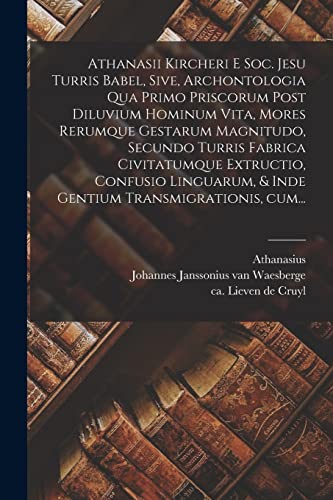
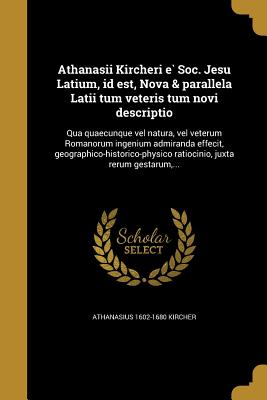
![Seller image for Athanasii Kircheri e Soc. Jesu Arca Noe in tres libros digesta, : quorum I. De rebus quae ante diluvium, II. De ii, quae ipso diluvio ejusaue duratione, III. De iis, quae post diluvium a Noemo gesta sunt, quae omnia nova Methodo, nec non summa argumentorum varietate, explicantur, & demonstrantur. (1675) [LeatherBound] for sale by S N Books World](https://pictures.abebooks.com/inventory/md/md31650179749.jpg)
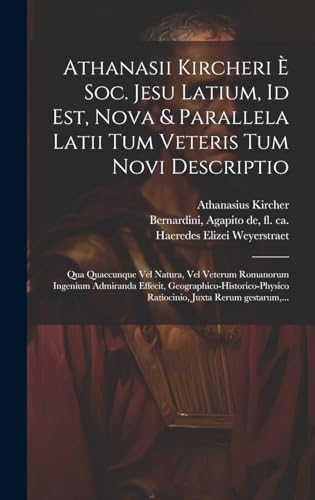
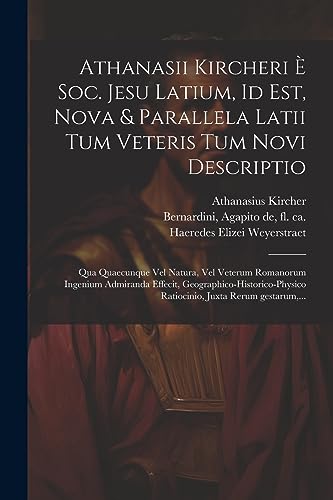

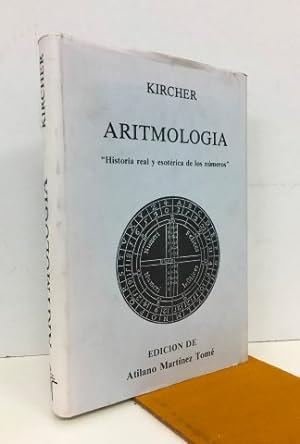
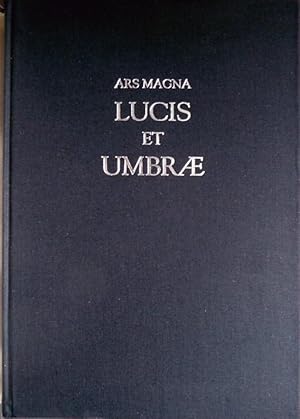
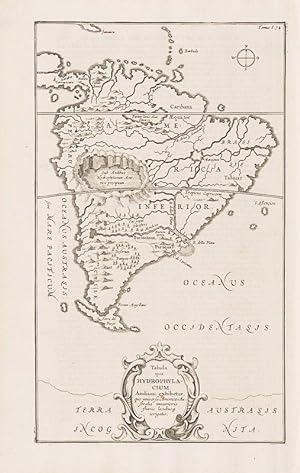
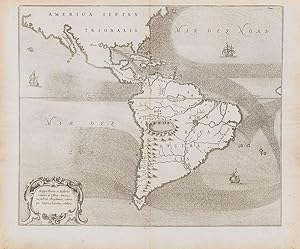
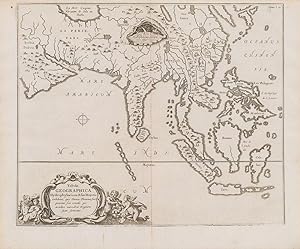
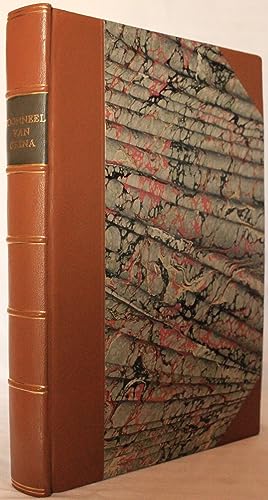
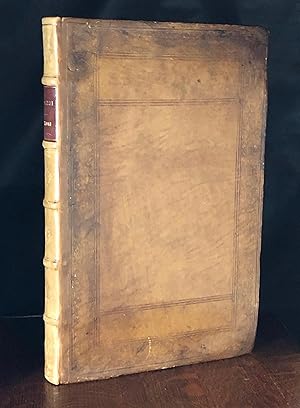

![Seller image for Phonurgia Nova sive Conjugium mechanico-physicum artis & naturae paranympha phonosophia concinnatum. quâ universa sonorum natura, proprietas, vires effectuúm[que] prodigiosorum causæ, novâ & multiplici experimentorum exhibitione enucleantur : instrumentorum acusticorum, machinarúm[que] ad naturæ prototypon adaptandarum, tum ad sonos ad remotissima spatia propagandos, tum in abditis domorum recessibus per occultioris ingenii machinamenta clam palámue sermocinandi modus & ratio traditur, tum denique in bellorum tumultibus singurlaris hujusmodi organorum usus, & praxis per nouam phonologiam describitur for sale by Liber Antiquus Early Books & Manuscripts](https://pictures.abebooks.com/inventory/md/md31837691410.jpg)
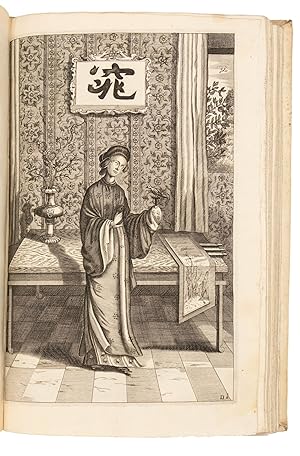
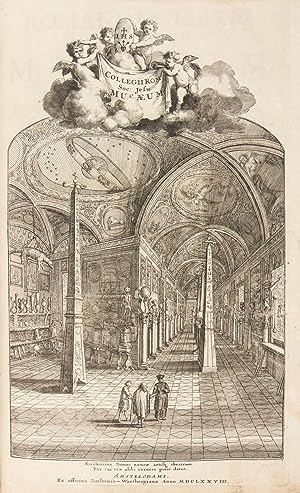
![Seller image for OEDIPVS AEGYPTIACVS. HOC EST Vniuersalis Hieroglyphicae Veterum Doctrinae temporum iniuria abolitae instauratio. Opus ex omni Orientalium doctrina & sapientia conditum, nec non viginti diuersarum linguarum authoritate stabilitum. [With] Tomus II. Phrontisterion Hieroglyphicum [and] Tomus III. THEATRVM HIEROGLYPHICVM for sale by Liber Antiquus Early Books & Manuscripts](https://pictures.abebooks.com/inventory/md/md31807916971.jpg)